A MAGIC SQUARE is a square table of positive integers (1, 2, 3, 4, 5, 6, etc.) constructed so that the sum of the numbers on each row, on each column and in both diagonals always gives the same number called the magic constant. The number of columns or rows is called the order of the square. Humans have always been attracted to mathematical games and the puzzles they involve. The magic square, in addition to being used as a puzzle, is in fact used by various civilizations–Arabs and Greeks especially–in certain applications of mathematics, such as combinatorial calculus, particularly to discover the total number of possible combinations depending on the order.
How to play
Choose whether to play with the 3×3 or 4×4 square. Distribute the pebbles in the wells so that adding the ones in the rows, or in the columns, or in the two diagonals gives the same number of pebbles. In the case of the 3×3 square the constant sum must be 15, in the case of the 4×4 square the constant is 34.
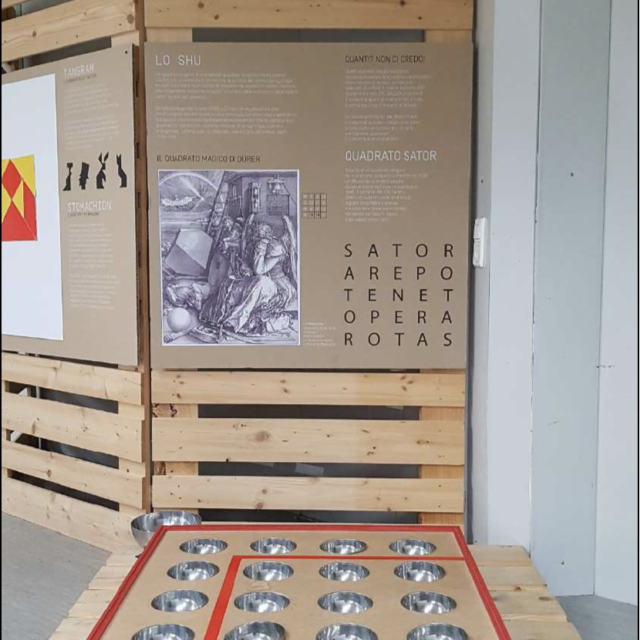
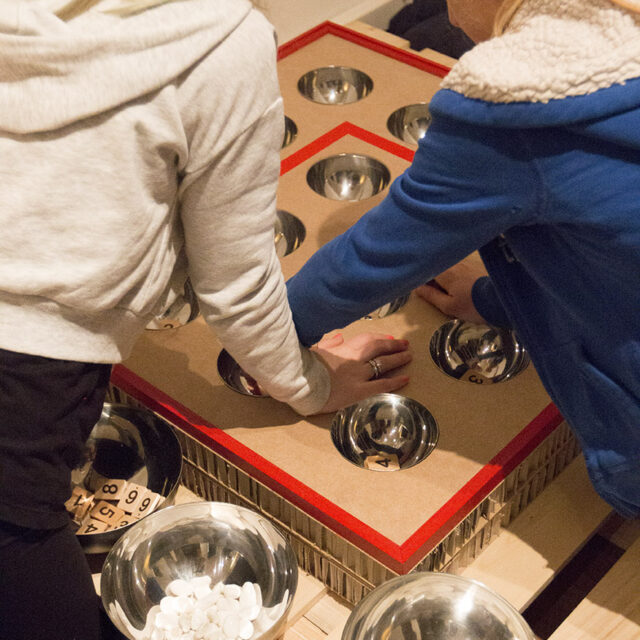
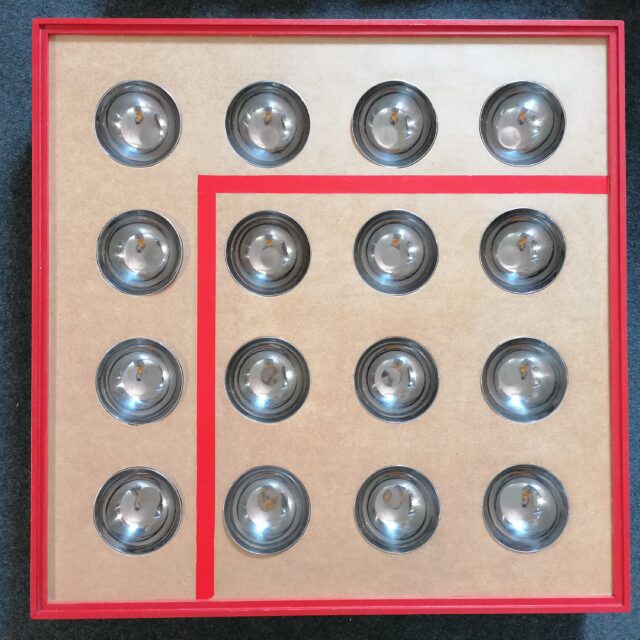
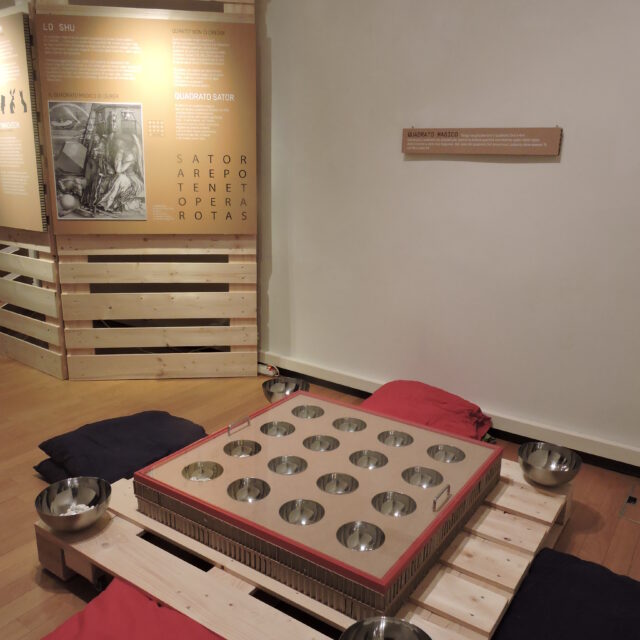
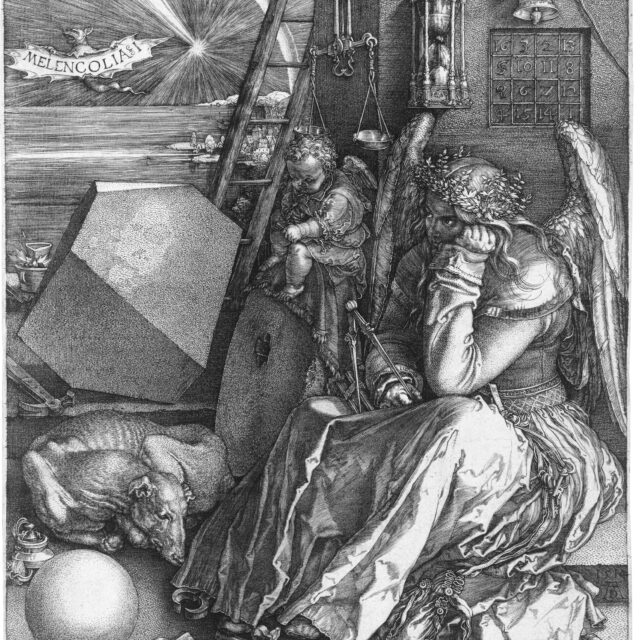
The magic square is a particular example of the Latin square, “square checkerboard of side n with a symbol on each square so that each appears once and only once in each row and column.” Another example of a magic square is the famous Sudoku.
MAGIC SQUARE OF ORDER 3 → n=9
A procedure for making up the 3×3 magic square (with numbers from 1 to 9) is as follows:
- Arrange the numbers on the grid in ascending order starting from the top left square.
- Move the numbers one square by rotating them clockwise around the 5 that is in the middle square.
- Swap places the numbers at the ends of each of the diagonals, that is, the 4 with the 6 and the 2 with the 8.

In more general terms, the sum of n consecutive numbers is given by [(n+1)×n]/2.
In this case n=9 so, applying the above formula, we get just that 45=(10×9)/2.
In fact, taking the two numbers in the outermost frame at the extremes and gradually the innermost ones, we always get the same value, i.e., 10; in fact, adding up the four pairs of numbers 1+9, 2+8, 3+7 and 4+6 to which we add 5, the middle and only number left unpaired. Once we know the sum of the numbers and want to arrange them in three rows (or columns) so that the sum is the same in each row, it is immediate to deduce that the constant sum (called the magic constant) must be 45/3 = 15.
- The number of magic squares of order 3 is 8, with constant sum 15, on rows, columns and diagonals.
- The number of magic squares of order 4 is 880, with constant sum 34, on rows, columns and diagonals.
Only thanks to the computer was it possible to extend the result, in 1973, to higher orders: the magic squares of order 5 are 275,305,224. The precise number of magic squares of order 6 is not known, although many mathematicians have been engaged in its determination. According to some investigations, their number is in the range of 1,7754 × 10^9. However, the more general problem of finding the rule to determine the number of magic squares of order n remains unsolved. This confirms that it is not easy to find a mathematical rule for all the quantitative problems we face!
Teaching link: Combinatory calculus
An ancient Chinese legend dating from around 2000 B.C. tells of a fisherman who found along the banks of the Lo River a turtle with strange geometric markings on its shell. The emperor’s mathematicians discovered that it was a square of numbers with constant sum 15 on each row, column and diagonal. The Shu, as it was called, became one of China’s sacred symbols.
One of the most famous magic squares is by Albrecht Dürer (painter and surveyor, 1471-1528) and appears in his etching entitled Melancholia I. It was probably the first to appear in European art and its magic constant is 34. The constant is also valid when individually adding up the four corner tiles, the four center tiles, the four quadrant tiles and several other combinations. In addition, the number 1514 (date of the work) and 34 (Dürer’s age when he made the work) appear.

Exhaustive Wikipedia page devoted to magic squares.
How to build
EXHIBIT MATERIAL:
- Horizontal pallet 120×120 cm
- Vertical pallet 100×215 cm
- MDF and cardboard base game 80x80x8cm, with 16 holes for bowls (12 cm diameter)
- Cardboard title panel
- Cardboard panel with explanation and Durer photo (100×100 cm)
- Cardboard panel with explanation (65×10 cm)
- n. 16 “IKEA style” stainless steel bowls (12 cm diameter)
- Numbers from 1 to 16 or pebbles in quantity
- Baskets for numbers or pebbles
CLICK AND DOWNLOAD PRINT-READY .PDF FILES:
- MAGIC SQUARE PANEL FOR GAME BASE (65×10 cm) (ITA)
- MAGIC SQUARE PANEL EXHIBIT WITH PALCE FOR DURER PHOTO (ITA) // dimensions: 100×100 cm // material: laminated honeycomb cardboard for digital printing, 5 cm high.
- MAGIC SQUARE PANEL FOR GAME BASE (FRA)
- MAGIC SQUARE PANEL EXHIBIT WITH PALCE FOR DURER PHOTO (FRA) // dimensions: 100×100 cm // material: laminated honeycomb cardboard for digital printing, 5 cm high.
- DURER PHOTO (credit: “The Wonders of the Arts” Vol. 2 (1882): Melencolia by Albrecht Durer) / Under public domain // To be printed on plastic material and applied to the 100×100 cm cardboard panel
- MAGIC SQUARE EXHIBIT TOT (ITA)
- MAGIC SQUARE EXHIBIT TOT (FRA)
